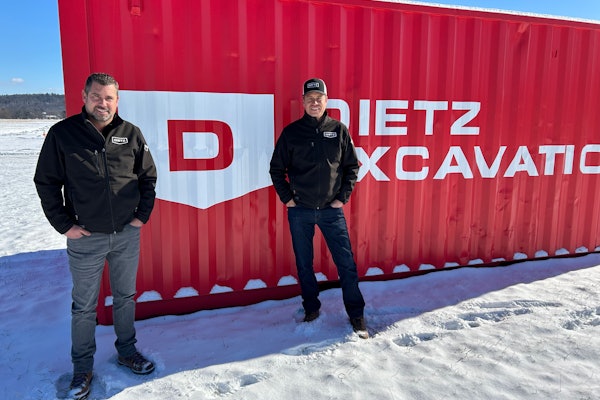With the introduction of the Liebherr PR 764 dozer at MINExpo last year, the company set a world record for the weight of hydrostatic dozers. At 110,000 pounds, the PR 764 weighs more than twice as much as Liebherr’s previously biggest dozer in the United States, the 45,000-pound PR 734 and is still considerably heavier than the Liebherr-built 88,000-pound John Deere 1050.
Dual tandem pumps
As components and materials for hydraulic systems improved in reliability, manufacturers have steadily increased the weight and the loads taken on by fluid-powered machines. What sets the design of the PR 764 apart is the use of four (rather than two) variable displacement pumps, each in a closed circuit. With this double tandem system, smaller hydraulic components can be used, says Jeff Shadowens, product specialist for loaders and dozers. The smaller components take up less space under the sheet metal, and by using existing components, the company reduced service and engineering costs.
Hydrostatic drive dozers give you full power turns, infinitely variable speeds, counter-rotation, smooth operation, demand-driven cooling, a low center of gravity and high ground clearance. They also run at a constant rpm and that allows Liebherr to tune the engine for maximum efficiency and horsepower, says Jeff Powell, general product manager. Purring along at a steady 1,600 rpm, the 422-horsepower, Liebherr-built, twin turbo, V-8 engine burns less fuel and experiences less wear and tear than an engine that’s throttling up and down.
This constant rpm operation also enables Liebherr to slightly downsize the engine relative to the weight of the machine. That poses some challenges when customers comparing specs want to know why the PR 764 has what appears to be an undersized engine. Most contractors think more horsepower equals more work, but a mechanical-drive, power-shift or torque-converter machine has to have more horsepower to push the drivetrain, Shadowens says. With a hydrostatic drive, you only need enough horsepower to maintain the hydraulic pressure to run your pumps and motors. So while the engine and horsepower are reduced with hydrostatic drive, the amount of work you do is not.
Less heat, longer pushes
Another difference between hydrostatic drives and torque converter designs is the distance they can push a load. Eventually the torque converter will heat up and become less efficient, thus limiting the range of these types of machines. With the hydrostatic drive you don’t have the torque converter heating up, so your work area can be a bit larger, Powell says.
Braking also suffers less wear and tear in a hydrostatic design. Unlike wet disc brakes that push metal against metal, hydro-dynamic braking uses fluid pressure to stop the machine.
Several ergonomic refinements have been designed into the PR 764. Air conditioning comes standard, and the seat puts the operator at a 15-degree angle to reduce back and neck strain. The ROPS is built into the structure of the cab, and sound attenuating materials plus the low rpm engine makes the operator environment less noisy.









